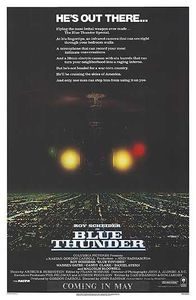Point of No Return (1993)
(In French, May 2019) If you’re keeping track at home, 1993’s Point of No Return is the American remake of Luc Besson’s 1990 French film La Femme Nikita, and both of them can be said to have been prequels to the better-known 1995 film Léon. As a remake, if very close to the original—Americanized, for sure, but otherwise very similar in story beats and overall themes, and perhaps a bit less stupid than Besson’s script. The influences go deeper, of course—Nikita explicitly became not one but two TV shows, there’s a good case to be made for Alias tracing back its early-years lineage to either the French or American version of Nikita, Besson seems to be rewriting his female-assassin urtext every few years (Bandidas was in 2006, Colombiana was in 2011, Lucy was in 2014, Anna is next in 2019) and much of Milla Jovovich’s career seems to have been facilitated by this film. But progeny aside, what about Point of No Return? Well, as directed by John Badham it’s a serviceable action film. The suspense and action scenes can be effective despite their familiar nature, and that goes for much of the film as well—given the endless quasi-remakes of that story, the film does feel formulaic at this point, and even the little bits of interest illustrating the story don’t feel quite as fresh these days. Bridget Fonda does manage a very good action/drama performance, with some smaller but showy interventions by Gabriel Byrne and Harvey Keitel. Execution counts for a lot, and the early-1990s sheen of the film is fast approaching period-piece status, not to mention the trend-trendy filmmaking tracks of the film. The Nina Simone songs add a bit of colour, and Point of No Return frequently needs it.


